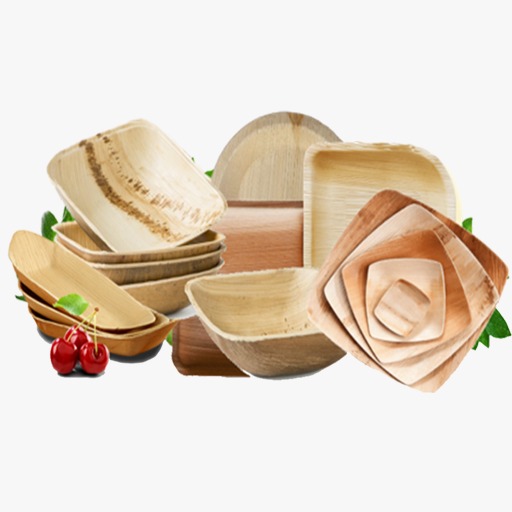
Are Compostable Plates Actually Compostable?
Introduction
The demand for sustainable living has skyrocketed in recent years, with consumers seeking eco-friendly alternatives to traditional products. Compostable plates are often marketed as a green solution, promising to reduce environmental waste while still being convenient. But are compostable plates actually compostable? Understanding the truth behind these claims is essential for anyone aiming to make informed, eco-conscious decisions.
In this article, we’ll uncover what it means for a plate to be compostable, answer frequently asked questions, and explore whether these products truly live up to their promises.
What Are Compostable Plates?
Compostable plates are typically made from natural materials like bamboo, sugarcane fiber (bagasse), or corn-based plastics (PLA). Unlike conventional disposable plates, these are designed to break down into organic matter under specific composting conditions, contributing to soil health rather than landfill waste.
However, the term “compostable” is not always straightforward. It’s regulated by organizations such as the Biodegradable Products Institute (BPI), which certifies products that meet standards for industrial composting. This certification is a key indicator of a plate’s compostability.
Are Compostable Plates Truly Compostable?
The answer depends on several factors, including the type of composting system and the materials used in the plates. Here’s what you need to know:
1. Industrial Composting vs. Home Composting
- Industrial Composting: Most compostable plates are designed for industrial composting facilities, which provide high heat, consistent moisture, and microbial activity. These conditions ensure plates break down within 90 to 180 days.
- Home Composting: Compostable plates may not decompose effectively in home compost systems. Without the controlled conditions of industrial facilities, they can take much longer to break down, if at all.
2. Material Composition Matters
Plates made from plant fibers like bagasse or bamboo are more likely to decompose in home compost bins. In contrast, PLA-coated plates or bioplastics require the heat of industrial composting to break down.
3. Environmental Considerations
- Composting Facilities Availability: A key issue is access to industrial composting facilities. In many regions, these facilities are limited, which means compostable plates might end up in landfills.
- Landfill Realities: In landfills, even compostable plates may not decompose due to the lack of oxygen and microbial activity required for proper composting.
FAQs About Compostable Plates
Q1: Can compostable plates be recycled?
No, compostable plates are not suitable for recycling because their materials and coatings differ from standard recyclable plastics or paper products. Attempting to recycle them can contaminate the recycling stream.
Q2: How can I compost these plates at home?
For home composting, opt for plates made entirely of plant fibers without any coatings. Cut the plates into smaller pieces to speed up decomposition. Be prepared for a longer breakdown process compared to food scraps.
Q3: Are compostable plates better than biodegradable ones?
Yes, compostable plates are often a better option because they are designed to leave no toxic residue, unlike some biodegradable products that may break down into microplastics.
Q4: Do compostable plates cost more than regular disposables?
Yes, compostable plates tend to be pricier due to their eco-friendly materials and manufacturing processes. However, the long-term environmental benefits often outweigh the initial cost difference.
Q5: What should I look for when buying compostable plates?
Look for certifications like BPI or OK Compost to ensure the product meets compostability standards. Also, check whether the plate is suitable for home composting or requires industrial facilities.
Key Insights and Takeaways
- Certification Is Crucial
Without proper certification, a product labeled “compostable” might not meet the necessary standards for decomposition. Always verify certifications. - Access Matters
The effectiveness of compostable plates largely depends on whether you have access to industrial composting facilities. In areas without these facilities, disposal options become limited. - Reduce, Reuse, Then Compost
While compostable plates are a step toward sustainability, the most eco-friendly choice is reusable dishware. Reserve compostable plates for situations where reusables aren’t feasible. - Educate and Advocate
Consumer awareness is key. Spread the word about the importance of proper disposal and support local initiatives to expand composting infrastructure. - Sustainable Alternatives
Consider alternatives like palm leaf plates, which are sturdy, compostable at home, and free from synthetic coatings.
Conclusion
Compostable plates can be a great eco-friendly alternative, but their actual impact depends on how they are used and disposed of. While they reduce reliance on plastics and landfill waste, challenges like limited composting access and confusion over labeling can hinder their benefits. By understanding the nuances and making informed choices, you can align your actions with your sustainability goals.
Before buying compostable plates, ask yourself: Is this the best option for my needs? And, how can I ensure it’s disposed of responsibly? With the right approach, compostable plates can play a meaningful role in reducing waste and promoting a greener future. {Compostable Plates USA}







